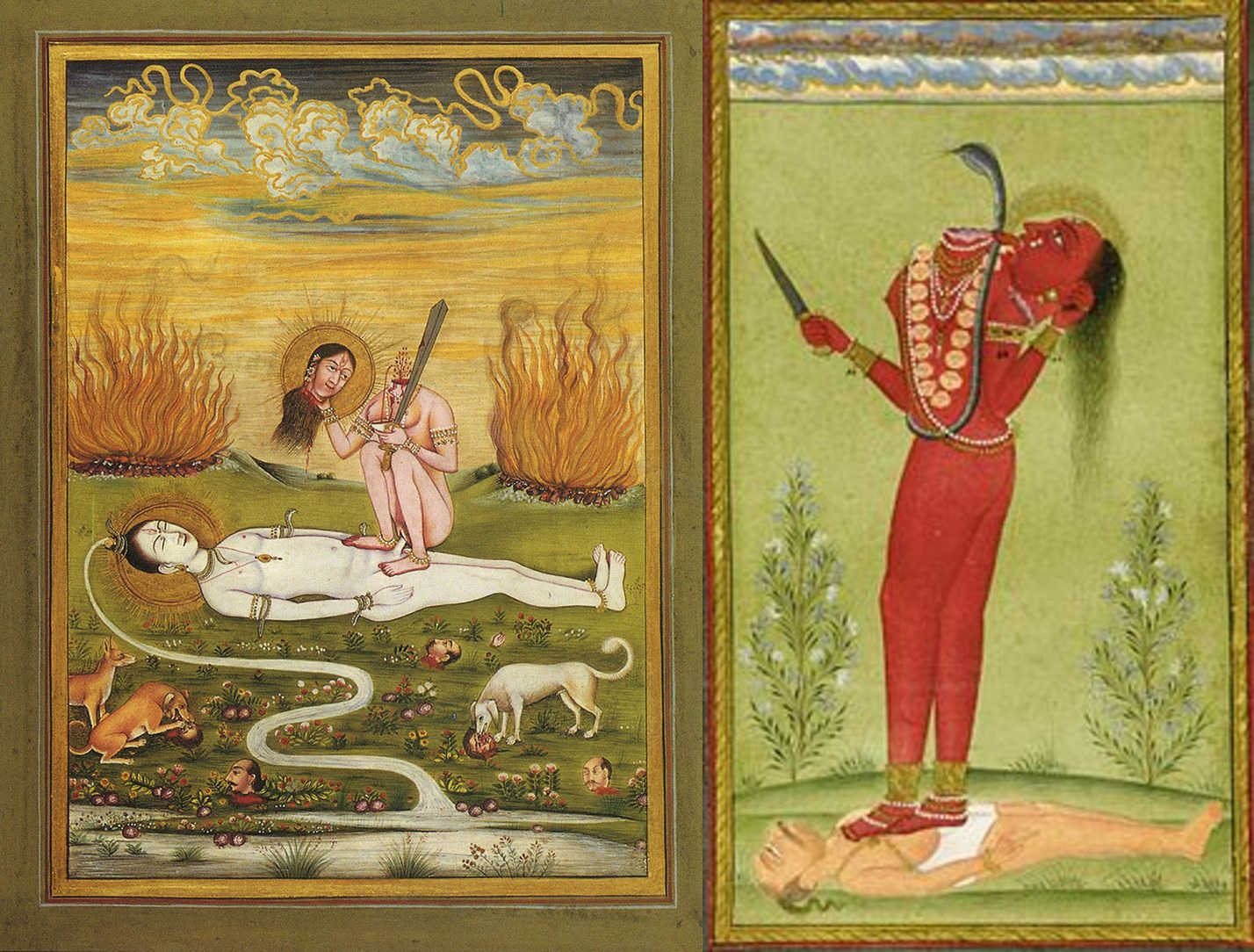Skulls and Bones
We enter here unto a mysterious subject, perhaps dark to some, but nevertheless universal and ancient. The self-consciousness of those first ancestors that contemplated their own head or those of their tribe, or the skull of an enemy severed in battle would experience profound effects on their psyche. There is a shock at seeing death for the first time, and the shock of the severed head even in the modern world has surfaced again in the psychological warfare complex that is modern (largely manufactured) “Islamic terrorism.” Back through history to the savage Masonic-Kabbalistic human sacrifice of the French Revolution’s guillotines, or the universal bringing of severed heads brought back as trophies in warfare, to shrunken heads of tribes, the severed head is one of the most gruesome deaths and make a savage statement to being capable of absolute brutality. The use of skulls for occult purposes becomes an equally ancient and universal phenomenon with implications and cults lasting up to the present day. These exist in the secret societies in elite college campuses, or back into the Nazi SS Totenkopf, which in turn is part of occult and warrior Indo-Germanic cults and secret brotherhoods.
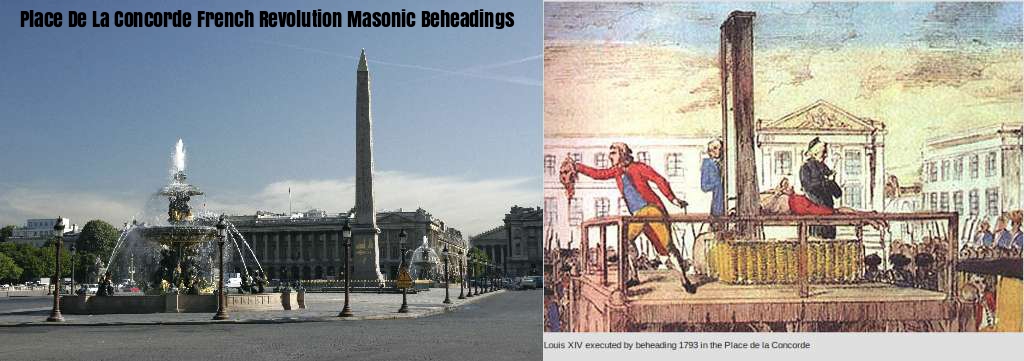
The energetic energies released upon death are powerful occult forces attracting entities and energies. This is the reason why gods literally harvest and feed upon the energy released. This energy creates a portal, link conduit or nexion to the outer subtle realms. Lower entities can respond to lesser sacrifices as in the voodoo cults, or the animal sacrifices in the Old Temple, at the Kaaba, or to Kali. This is the thesis in the Golden Bough, the sacrificial rites of king’s ritual death and the substitutions through the generations. The God Jehovah/Allah are the most blood thirsty, demanding animals to be bled in sheer terror in kosher slaughter, for a maximum fear as they can not be knocked out first. This is also a fundamental aspect in dark occult human sacrifice where the victim is traumatized. Druids were said to divine the future by the contortions of the death throws of animals or humans. Mayan gods demanded innumerable sacrifices as did the Babylon gods and countless others. There are the explanations that these are ways of dealing with surplus, or undesirable aspects or vague fears of appeasing unknown forces, but there is much more to this. The energy of sexual release can ignite the consciousness spark of life. The blood sorcery has an equal power attracting intelligences outside the normal human visible spectrum. The massive wars and open air public assassinations (like with JFK) are orchestrated ritual sacrifices, a payment from the elite who are given power, wealth and even high technology from these entities as evidenced in various examples. One that is modern and quite famous being the oracular witches and the SS occultists using sex and ritual sacrifice to invoke off-world intelligences in the vril society. This was also a central rite in many kabbalistic Jewish groups, who were endlessly accused of sacrificing children, as well as masonic groups like the Hell fire club or Bohemian Grove, where a human effigy is burned, but it was said to be a human in former times.
The folklore of oracular severed heads are legion. One of the most famous and connected to the Ancient Mystery Cults, is the severing of the head of Orpheus, whose head and lyre were cast into the river, with the lyre playing music, and the head of Orpheus answering the notes with song. In Norse mythology, which is part of the Hyperborean Artic/Northern source of the Vedas (see works of Bal Gangadhar Tilak), there was the sage Mímir (Old Norse “The rememberer, the wise one”) renowned for his knowledge and wisdom. He is beheaded during the Æsir-Vanir War and his head is found by the Rudra-Shiva archetype god Odin who carries around Mímir’s head and it recites secret knowledge and counsel to him. Mimir is also connected to a mead of inspiration which he drinks as does Odin by sacrificing an eye. Indra severed the head of the Rishi Dadhyanc Atharvan, a Rishi with a horse head, for knowing the secrets of fermenting honey into mead as well. There is also the Irish magic cauldron or grail and the the talking head of Bran. Scholars note this continuing importance that will show up in Grail myths, the accusations against the Knights Templar, following Nordic and Celtic head cults: “A most important aspect of Celtic religion was the head cult. There is strong evidence showing a close association of this cult with sacred springs and pools, some of it having survived even to the present day, albeit in fragmentary form and lacking the power of the original Celtic stimulus. The Celts were head-hunters… To the Celts the head was the most important part of the body, symbolizing the divine power, and they venerated the head as the source of all the attributes they most admired…”
One might speculate that the establishment has availed themselves of oracular severed heads in numerous instances. The above mentioned head of Bran as “chronicled in the Mabinogion states that upon the death of the giant king Bran the Blessed (‘bran’ means raven in Welsh), his head was cut off and buried at the “White Hill” in London, (usually identified as Tower Hill) “with the face turned towards France”. This burial is known in the Welsh Triads as one of the Three Happy Concealments of The Island of the Might.” Also as mentioned the Knights Templars were accused of consulting a severed head, associated with the Baphomet, perhaps learned by Arab mystics as ras el-fahmat (head of knowledge). Some speculate this was an alchemic dead head (caput mortem), the Head of John the Baptist, and even the head of Jesus Christ or Hiram Abiff the Temple of Solomon Martyr. The Knights are said to have fled to various places, which in turn became the seat of power, financial cryptography and a host of other powerful and intriguing mysteries. This power converges into the secret hands and secret societies that assassinated and plotted and financed all the world wars and communist revolutions, playing all sides, creating a synthesis of both systems, where the all seeing-eye is the severed-head or head stone cap stone elite above the slave class of the pyramid.

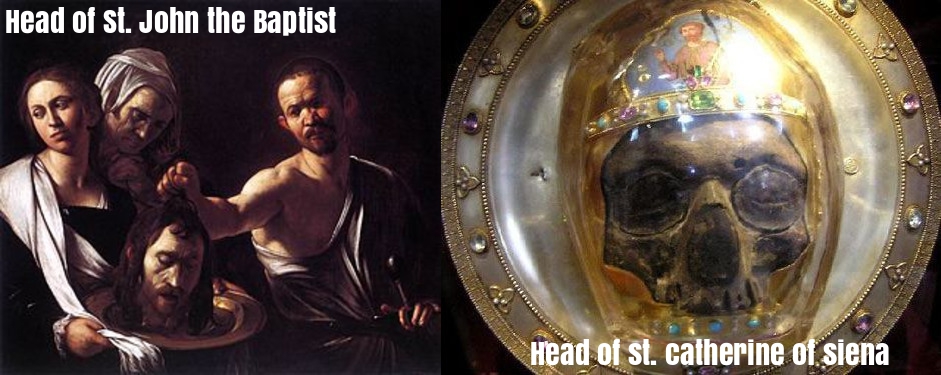
Likewise the Crown backed pirates and privateers that pillaged the oceans used the severed head or jolly roger symbol, and there is significant lore of specific secret socities and Masonic ships. The severed head certainly became a central symbol in Freemasonry and their nefarious dark Kabbalistic entities, archons and demons they invoke in their miniature Solomon Temple lodges. The Freemason, KKK founder and Illumaniti provaceteur Alber Pike is also said to have a severed head that he would consult. Severed heads show up in the highest levels of US power with the Skull and Bones secret society. The founding members such as the future presidents and Bonesman of the Bush family, were grave robbing famous graves and stealing skulls. It is an interesting theory that we put forth here: The Skull and Bones fraternity is said to posses the skull of the mighty Native American warrior Geronimo (along with many others such as one with a square wound on top named Thor, Mexican General Pancho Villa and Former President Martin Van Buren) and have refused to return it despite tribal protests and lawsuits. It is interesting to note that Geronimo became a famous thing to say by paratroopers during WWII, of which the first President Bush was active. It seems likely that he was calling upon the skull, likely in all seriousness given the occult nature of these groups, that became overheard and mimicked because he was a man of prestige and high standing. One thing that binds all these traditions from knights, masons, pirates, elite fraternities are the similar blood and beheading oaths, such as this “…under no less penalty than loss of life, by having my head struck off and placed on the point of a pinnacle or spire, my skull sawn asunder and my brains exposed to the scorching rays of the sun—– ‘

Alchemical Death’s Head
Alchemically the caput mortuum (alternately called nigredo) is a substance remaining in a chemical operation such as sublimation or other spagyrical operations, though some use the caput mortem for specific purposes. In manuscripts and art alchemists represented this residue with a human skull, or death’s head. In 18th-century chemistry it came to mean residue, remainder or residuum. Caput mortuum was also sometimes used to mean crocus metallorum, i.e. brownish-red metallic compounds such as crocus martis (ferrous sulphate), and crocus veneris (copper oxidule) in specific operations. In spagyrics it is the material that remains after repeated distillations the insoluble caput mortem of Sulfur. These ancient traditions of alchemy in the West can be found encoded in many of the Greek and Roman myths, such as the Golden Fleece which was an ancient way of distilling the alchemical gold by catching the gold evaporating into wool or fleece suspended above the pot. So is the myth of the Medusa, a snake headed Gorgon that turns anything thing that it sees into stone, or projection of the Philosophers Stone, who is beheaded. From her head comes a type of magical coral or belisis and her buried head turned the herbs by the sea into stone.

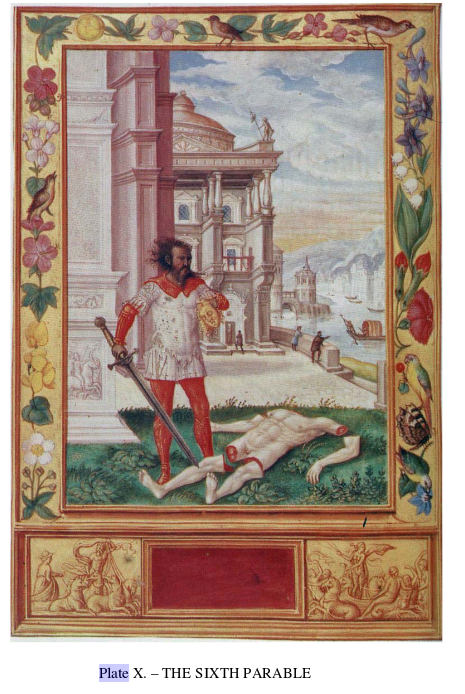
Drops of Medusa’s blood that touched the ground changed into the winged horse Pegasus*. Wearing the helmet that made him invisible, Perseus flew off on Pegasus which is associated with the soma/haoma herb Peganum harmala or Syrian Rue, also associated with Sufi mystics and the flying horse of the Prophet Muhammad Al-buraq, as well as the Horse sacrifice and horse headed rishi. It is the shapeshifting Perseus who obtains the stone head of Medusa, who must not look upon her directly but through her reflection, the illusory delusions that appear demonic (maya matrix). To kill this demon that destroys all, Perseus is given a adamantine sickle from Hermes, the Hermetic alchemical task of subduing the delusions and demonic elements. Perseus must obtain the winged sandels (the quicksilver of mercury as messenger of gods and conduit between realms), an invisibility helmet (the hermitic sealing and retreat) and a special wallet (the crucible) to contain the head, from the Stygian Nymphs who share one-eye and one-tooth between them. This is the single eye of the third eye and the one-taste of the Tantric realization that must be had in order to yield this demonic energy as a weapon and creator of wealth.
The examples in Western alchemy are many, but another particularly stunning example in both poem an painting is found in the 10th plate of the Splendor Solis and in the Sixth Parable.:
Rosinos relates of a vision he had of a man whose body was
dead and yet beautiful and white like Salt. The Head had a
fine Golden appearance, but was cut off the trunk, and so
were all the limbs; next to him stood an ugly man of black and
cruel countenance, with a bloods
tained double-edged sword in
his right hand, and he was the good man’s murderer. In his left
hand was a paper on which the following was written: “I have
killed thee, that thou mayest receive a superabundant life, but
thy head I will carefully hide, that the worldly wantons may
not find thee, and destroy the earth, and the body I will
bury, that it may putrefy, and grow and bear innumerable
fruit.”
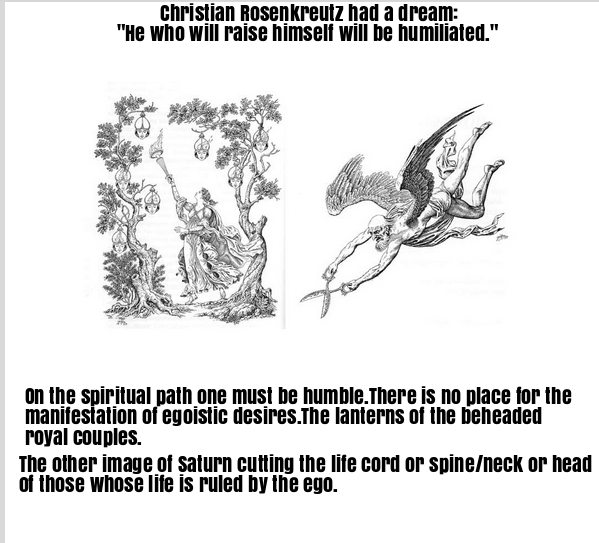
This is an alchemical death, a willing death before dying, a submitting to a shattering and dissolution of the ego, the self, the personality. The plate depicted of the severed body, willingly offered in the alchemical process is similar to the symbolic visionary self-sacrifice of the Tibetan Chöd (to severe) practice. This is also the alchemical reading of the crucifixion of Christ, between the two channels that rob (a thief) and kill (murder) concentration and lifespan through emotional and energetic disturbances of the nadis, that are fixed (stabilized) to a cross (the intersecting worlds of divine and human realms, the brazen serpent fixed to a cross) on Golgotha (“place of the skull”) that can symbolize the Christ divine consciousness ascending Sushumna, resurrected in the skull as the thieving erratic energies are swooned (crucified) and brought back to life. Some traditions have Christ being decapitated after the crucifixion and his skull being used in various occult secret societies.
Skull Bearers
The skull iconography in Vedic Buddhist and Tantrik lore is sometimes graphic, beautiful, and powerfully invoking the paradoxes of life and death, of sexuality and repression, and the borderlands and twilights of existence. This is a culture where death is not hidden away, and at least historically, the carnal grounds were a part of every day life, as was death itself. The calcination of humans to dust, like the alchemical bhasmas, was just a part of the unfolding flow of life and death. Gods, yogis, sadhus and many types of wrathful or occult entities used a skull as a bowl, gathering potent spiritual forces to infuse their nectars. Going back to the sacrificial rites of the witch goddesses that demanded sacrifice. Human sacrifice is a common element, as discussed above, as a primal energy source that attracts, entices and feeds disembodied or discarnate intelligences. These can be re-localized and fixed into the same materials that naturally are used to embody the soul. The skull is the primary seat of the soul, as it is also the only appendage the body can not survive without.
The use of skull for oracular or divination or other occult purposes partake of an extensive complex of yogic and tantrik necromancy, from the Shava sadhana corpse mediation to the magical uses of kapal kriya (ceremonial breaking of the skull of a corpse at cremation). The kapalika or skull-bearers, who date from at least as early as the 3rd century CE become synonymous with wild sadhus, tantriks, in skins, performing left-hand path love magic, necromancy, etc. They carried skulls as eating bowls and likewise there is the folk tantric and lineages that fed skulls with plates of offerings, and fire rites, incense etc. gaining bhuta siddhi (mastery over spirits). Kapalika are extreme Shaivates, imititating Shiva in a radical manner, paricularlly with the Mahāvrata or “great observance”, also called kapālavrata (or ‘observance of the skull’), lokātītavrata (or ‘observance going beyond the world’) and mahāpāśupatavrata (or ‘great Pāśupata observance’). It requires a full assimilation to Shiva in the form of Bhairava. The direct precursors of Kāpālikas were the Lākulas, also called Kālamukhas and Mahāvratas. They were the first Śaiva sect to practice the mahāvrata.
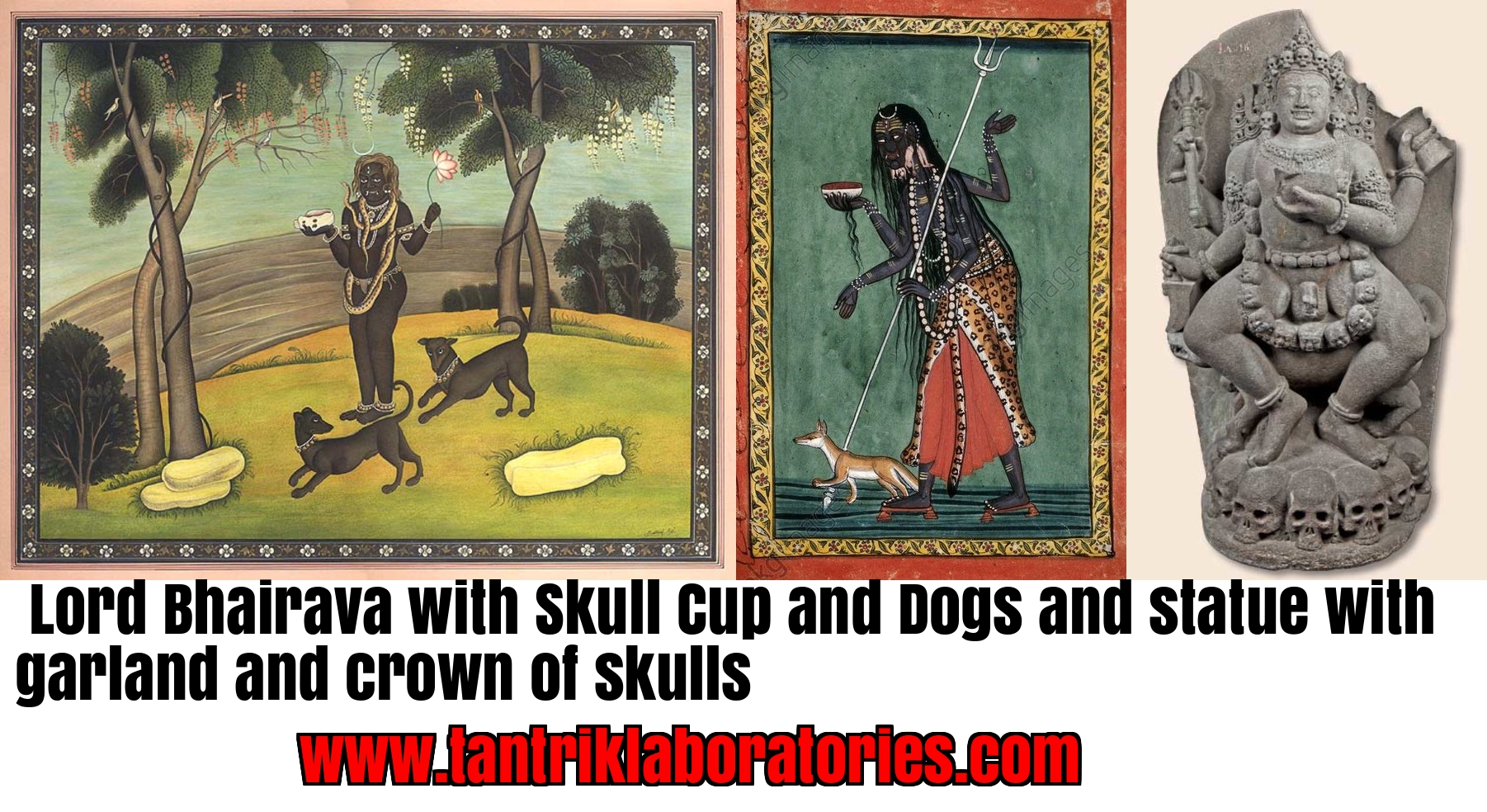
In Tibetan Buddhism the Skull-cup is the wisdom vessel, holding the deities sustenance. Yogis, Siddhas, deities, etc, hold it in the left or wisdom hand, and it is iconically holding nectar or amrita, semen, alcohol, cakes or tormas, fresh blood, marrow, fat, brains and hearts or organs of demonic enemies. It is a method for preserving bliss, (white bodhichitta), the skull-cup of blood Sanskrit rakta-purna, Tib. thod-khrag) is a swirling offering. There is also the red female bodhichitta, depending on the way the blood is swirled for a father and mother tantra. The skull-cup of blood represents the deity (white skull) filled with the great bliss (red blood) and the rising of the illusory body (white skull) from the state of clear light (red blood). On a more exoteric level, the skull is a deep reminder of impermanence and impending death which invokes renunciation. It is also used to hold food for nectars and medicines, longevity pills and relics. Tibetan Buddhists hold that the cranial fissures of the skull are depicted in a Y-shaped crack, with two semi-circular cracks on the sides, which are angular zigzags representing the Five Buddhas, while the skull cup or the inner offering has only a single fissure symbolizing the indivisible union of skillful methods and wisdom, while a skull with six cranial fissures is deemed especially useful in magical rites. Skull-cups are fashioned from the cranial portion of the skull and as mentioned, special skulls have special properties for specific purposes. Victims of murder and execution are the best, while a Brahman’s skull (especially a young Brahman girl) is the most powerful for Tantriks. Also powerful are those of children dying during onset of puberty, or “misbegotten skull” Tibetan nal-thod of incestuous unions or “charm blood” thun-khrag as an aspect of Shri Devi in all her wrath.

Kapalas were also used in rituals like higher tantric meditation to achieve a transcendental state of thought and mind within the shortest possible time, as offering bowls on the altar or as eating or drinking bowls. It was believed that the people who drank out of the skull caps would obtain the knowledge and personality from the person to whom the skull belonged. The use of a human skull as a drinking cup in ritual use or as a trophy is reported in numerous sources throughout history and among various peoples, and among Western cultures is most often associated with the historically nomadic cultures of the Eurasian steppe. The skulls were often regarded as “karmic vessels” which contain the good and bad qualities of the dead person. The karmic force of the dead is believed to be still alive in the skull and thus will infect living beings on touch. Therefore, it is said that only with the proper religious instruction and Tantric transmission one is able to make skillful use of the power of skulls and avoid harm caused by bad karma associated with the skull.
The essential representation of this in Tantric form is Chhinnamasta (Sanskrit Chinnamastā, “She whose head is severed”), often spelled Chinnamasta, and also called Chhinnamastika and Prachanda Chandika, is a Hindu goddess. She is one of the Mahavidyas and a ferocious aspect of Ma Devi. The nude self-decapitated goddess, usually standing or seated on a divine copulating couple, holds her own severed head in one hand, a scimitar in another. Three jets of blood spurt out of her bleeding neck and are drunk by her severed head and two attendants. The three streams of blood are the three psychic channels : the ida, pingala, and sushumna, as the inner energies are liberated through severance of the head/ego. “Chhinnamasta is a goddess of contradictions. She symbolises both aspects of Devi: a life-giver and a life-taker. She is considered both a symbol of sexual self-control and an embodiment of sexual energy, depending upon interpretation. She represents death, temporality, and destruction as well as life, immortality, and recreation. The goddess conveys spiritual self-realization and the awakening of the kundalini– spiritual energy. The legends of Chhinnamasta emphasise her self-sacrifice– sometimes coupled with a maternal element– sexual dominance, and self-destructive fury.”
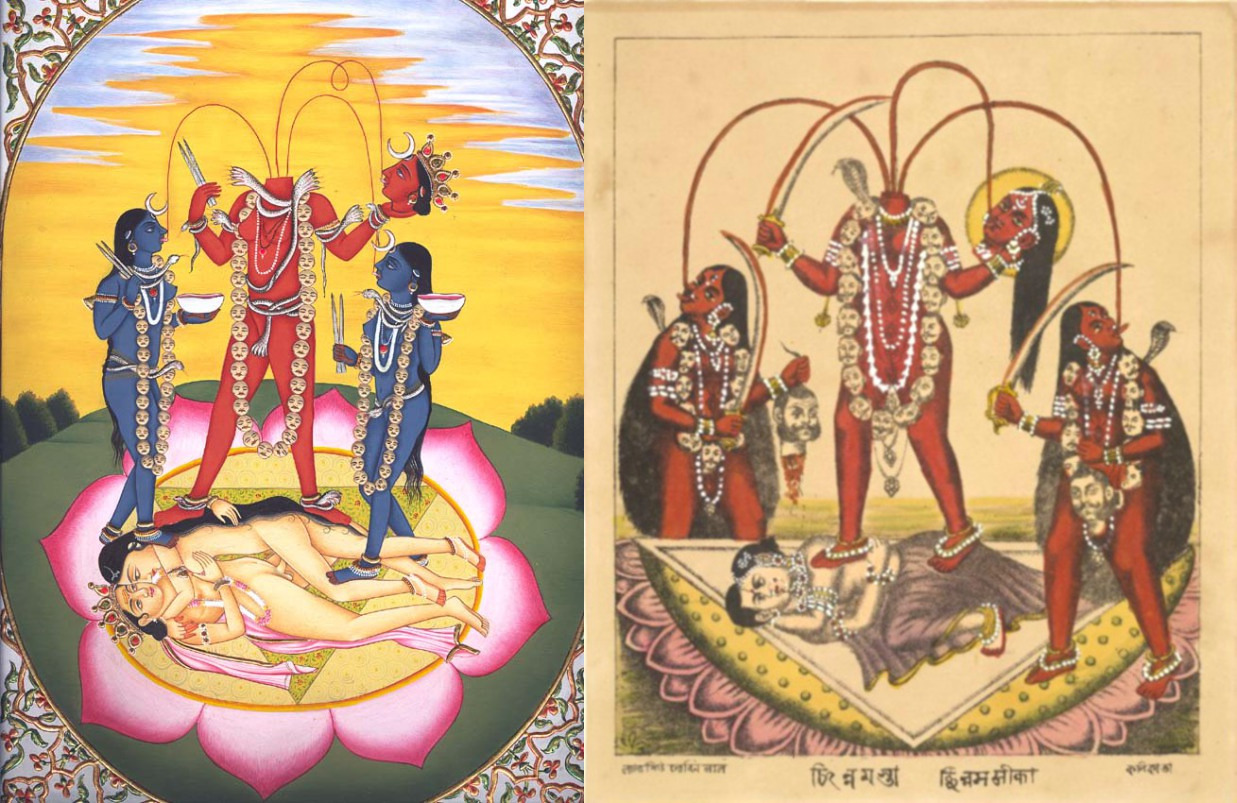
Further, “Buddhist texts recount the birth of the Buddhist Chinnamunda… and of Krishnacharya’s disciples, two Mahasiddha sisters, Mekhala and Kanakhala, who cut their heads, offered them to their guru, and then danced…. The goddess Vajrayogini also appeared in this form and danced with them. Another story recalls how the Mahasiddha princess Lakshminkara, cut off her head as a punishment from the king and roamed with it in the city, where citizens extolled her as Chinnamunda-Vajravarahi.” Though seemingly demonic and terrible in her aspect and depictions, the oral traditions show her as the supreme embodiment of the Mother Goddess energy of self-sacrifice and egoless action. An oral legend tells how the goddess Prachanda-Chandika is the heroin goddess that came to aid the gods in the god-demon war, when the gods prayed to the Great Goddess Mahashakti. After slaying all demons, the enraged goddess cut off her own head and drank her own blood. The name Prachanda-Chandika also appears as a synonym of Chhinnamasta in her hundred-name hymn in the Shakta Pramoda (19th century). Another oral legend relates her to the Samudra manthan (Churning of the Ocean) episode, where the gods and demons churned the milk ocean to acquire the amrita (the elixir of immortality). Chhinnamasta drank the demons’ share of the elixir and then beheaded herself to prevent them gaining the power. She is thus the maternal hero and Shakti power that destroys the demons of ego and she conquers the demonic forces that inflict suffering on the world. But she is also capable of self-destructive fits and sexual dominance, all of which are the potentials of extremes, paradoxes and source of her power. Chhinnamasta is described as being as red as the hibiscus flower or as bright as a million suns. She is usually depicted as red or orange in complexion and sometimes as black. She is depicted mostly nude; however, she is so posed that her genitals are generally hidden or a multi-hooded cobra or jewelry around the waist covers them. She is depicted as being young and slim. She is described as a sixteen-year-old girl with full breasts, adorned with lotuses or having a single blue lotus near her heart. She is often shown above a couple in erotic ritual embrace, in the (viparita-rati sex position), with dogs licking up the spurting blood or in a cremation ground. Her self-decapitating form over a sexual lusty body are the perfect glyph of the mystery of creation, dissolution, and re-creation, and the cylces of the alchemical solve et coagula. Chhinnamasta’s names like Kameshwari (“goddess of desire”) and Ratiragavivriddhini (“one who is engrossed in the realm of Rati– [copulation or sexual desire]”) and the appearance of klim– the common seed syllable of Kamadeva and Krishna– in her mantra support this interpretation. The inverted triangle, found in Chhinnamasta’s iconography as well as in her yantra, signifies the yoni (womb) and the feminine. The goddess is often prescribed to be visualised in the centre of the inverted triangle in the navel. It also signifies the three gunas (qualities) and three shaktis (powers)–iccha (“will-power”), kriya (“action”), and jnana (“wisdom”). The goddess is called Yoni-mudra or Yoni-gamya, accessible through the yoni.
Tachikawa-ryu Skull Rites
The most detailed Skull instructions, outside of certain Thai magic traditions, is found in heterodox esoteric Tantric Buddhist sect in Japan. This is the Shingon related Tachikawa-ryu sect that taught sexual practices and other occult arts that remained mostly imaginary in the other sects. Most famous among these is the Skull Ritual. This is a ritual involving the use of human or animal skulls for oracular purposes. Scholars find they derive from rituals to Anuttarayoga tantras of Indo-Tibetan Vajrayana-tantra especially the Hevajra Tantra and Candamaharosana Tantra. Most information of the Tachikawa-ryu Skull Ritual comes from unknown Shingon monk named Shinjō, detailed in one of his works titled Juhō Yōjinshū (受法用心集), written about 1270AD.
“The Ritual is as follows:
If anyone would practice this secret Dharma (Ritual) and attain great Siddhi (magical powers), he must construct an object of worship (honzon). I do not refer to the auspicious face of a woman here; this Misogi (purification Rite) is a skull. There are, in fact, ten different types of skull that may be used:
1 the skull of a wise man
2 the skull of an ascetic
3 the skull of a king
4 the skull a shogun
5 the skull of a great minister
6 the skull of an elder
7 the skull of a father
8 the skull of a mother
9 a “Thousand Cranium” skull
10 a “Dharmadhātu” (entire material universal) skull.
The first eight are clear enough. The “Thousand Cranium” skull is made by grinding the tops of a thousand men’s skulls into flour and molding the bone-paste into a honzon. For the “Dharmadhātu” skull, one must go to a cemetery on the chōyō (an onmyodo festival held on the 9th day of the 9th month. Since the number 9 is the perfect maximum yang/yō in Chinese divination it is seen as a particularly powerful and auspicious day.), collects a large number of skulls, chants Dākini represent an especially crucial component of the Skull Ritual) incantations/prayers, and prays over the skulls. Finally, he takes the one, that when placed at the bottom of pile of skulls repeatedly rises to the top of the pile; or else he goes out on a frosty morning and selects the one that on which no frost has formed. Or, best of all, he selects a skull that is completely free of suture lines.
Whatever type he chooses can be made into a Honzon (本尊) (object of worship). For any of the ten types of skull there are three methods of construction possible. These are “the whole head”, “the small head”, and “the moon-shaped head”. For “the whole head”, the officiant uses the original skull. To this he adds a chin, puts in a tongue and teeth, and covers the bone with a hard lacquer so that it looks just like the unblemished flesh of a living person. When the skull has been completely formed, he places it in a box. Then he must have sexual intercourse with the skull and with a beautiful and willing woman, and must repeatedly wipe the liquid product (the mixture of male and female seminal and vaginal secretions) of this act on the skull until it reaches 120 layers. Each night at midnight he must burn “Spirit returning” incense (frankincense/hangon-kō), pass the smoke through the eye holes of the skull, and chant a “spirit returning” mantra fully and perfectly one thousand times.
After carrying out the procedure above for a number of days, the officiant places the appropriate charms and secret talismans (sōō motsu) into the skull. Once this procedure has been meticulously completed, he covers the skull with three layers of gold and silver leaf. Over these layers, the mandala must be inscribed, and then more gold and silver leafe applied, then another mandala applied over that, just as before. Thus the layers of gold and silver foil and sacred writings are built up – the outer layers are five and six, then in the center thirteen layers, all over the base of 120 layers of the red and white elixir (male and female sexual secretions). (Presumably this will equal the thickness of muscle and flesh of a real person) The ink of the mandlas should also be the twin fluids of intercourse.
Cinnabar (mercury sulfide) is rubbed into the tongue and lips, the teeth are set in silver leaf, and the eyes are painted in comely fashion, or, precious gems (jade, mother of pearl, or cornelian) can be used for the eyes. Them face is painted white and rouge patted in to create the appearance of a beautiful woman or boy. The image must look prosperous and have a face that smiles without the slightest hint of reproach.
During the entire process the sacred skull is to be kept on an altar in a place where no one ever goes, and various delicacies, beautiful flowers, and fine wines are to be offered to it. No one must go there (to the skull altar) but the craftsman, the adept, and the woman. There (at the skull altar) they must happily and willingly and ceaselessly disport themselves as if celebrating the first three days of the New Year. Each act and word must be wholly free of any sign of care.
Once the Honzon is finished, it is installed on the altar. Offerings of rare things are made daily; spirit-returning incense is burned; and the various observations are carried out at the hours of the Rat, the Ox, and the Tiger (midnight to dawn). With the arrival of the Hour of the Rabbit (dawn), the Honzon is placed in a bag made of seven layers of brocade. Once this bag has been closed, it is not easy to reopen. Every night the bag is held close to the adept’s body to keep it (the skull) warm; during the day it is placed on the altar, where delicacies (fowl, fish, meats, blood, rice, and so on) must be gathered and offered for its nourishment.
For seven years, day and night, the adept must and will devote the whole of his being and mind to this practice. When the eight year comes, the ascetic will obtain siddhi (magical powers). For those who reach the highest grade of practice, the Honzon will return to life and speak aloud (presumably predicting the future and bestowing upon the practitioner great wisdom and knowledge). Since it will inform him of all events of the universe, he should listen carefully to it and thus become as someone with divine powers. For practitioners of the middle rank, the Honzon will tell them the meaning of their dreams. It will not speak to those of the lower ranks, but all their desires will come to be realized in accordance with their wishes.
The second method, the “Small Head” method, exists because of the difficulty of carrying around a whole head. The top of one whole skull can be divided into eight pieces and each piece used as a face lacquered into a plate made of wood of a sacred tree. Again, one sketches in the mandala in thin layers, daubs the Honzon with the twin waters of intercourse, inserts the appropriate charms and talismans, and decorates the face just as before. The “Small head” is then hung around the neck but under the garments, and nourished just as before.
In the case of the third. “Moon-Shaped” method, a whole cranium is cut off at the eyebrows, the brain pan is carefully dried and cleaned, and the moon-shaped inner cavity coated with the lacquer of the twin waters of intercourse. Various charms and talismans are placed in it, again the mandala is laid out in thin color, all as before. On the surface of the “Moon-skull” the practitioner must paint a Honzon while continuously reciting mantras. Cinnabar in packed inside. Then the practitioner is to wrap the skull in a nine-layered monk’s habit made from silk stained with menstrual blood of a beautiful young virgin woman. He then places it in a nine-layered casket wrapped in seven layers of brocaded silk, hangs it from his neck under his garments (to keep it dry and warm), and devoutly recites mantras to it wherever he goes.
There are recommended variations on this procedure, from taking the skull to its final installation and resurrection, since several oral (Kuden) teachings have been handed down by the old and wise. I have noted and summarized only about one-hundredth of the whole Ritual. But in general this is how the practitioner carries out this Ritual.”
This procedure is found in nearly identical forms among certain Lersi Hermit traditions in Thailand occult circles. Complete with talismans, ground bone clay ashes, sigils and fluids.
The use of skulls offer a broad spectrum of symbolic and practical occult uses that go back to the warrior cults of ritual predators who drank from their vanquished enemies skulls and intuited that a power or energy was transferred. The shamans under the influence of the sacred herbs had the supernatural vision to see the spirits and ghosts and placate and pacify them, eventually coercing them and feeding them and finally mastering and controlling them for magical purposes. The evolving Tantrik and occult lore of India spread through out all of Asia, with the skull feeding and skull shamanism being found all over with startling cohesiveness. This is actually maintained up into the accusations of the Templars, the KKK and Freemasons, and the Skull and Bones as well as certain dark sects and sinister yogis. There is a Dharmic, wise and beneficent use of this necromancy, but like any technology or tool it can and will be abused. Those that seek the darker ends not only risk the karmic stains, but they psychically and emotionally entrench themselves in this world, in this reality, and emphasize and amplify the most delusional aspects of the perceived reality. The reality of this occult technology is too pervasive, too consistent, and too cohesive across time and space to mere superstition. Tantrik Laboratories is dedicated to the experimental use of such techniques for spiritual growth and propagating an alchemical Dharma. Please support our research and work buy donating to our cause for some of these empowered holy power substances.
*“Pegasus. Πήγασος, (Pégasos -strong) is phonetically similar to πηγαιος (pegaios- from a spring/ of water/ belonging to the primal source) πηγάζω (pegazo – spring, gush forth), πηγός (pegos- stout, thick, tough). So from this action we are given a thick “strong water” that springs forth from the head of Medusa. This strong and volatile water is the only thing that can dissolve certain bodies. It is only through the repeated use of this water that it is possible to solve and coagulate and reach πηγνυμι (pegnumi- fix) or fixity.”
